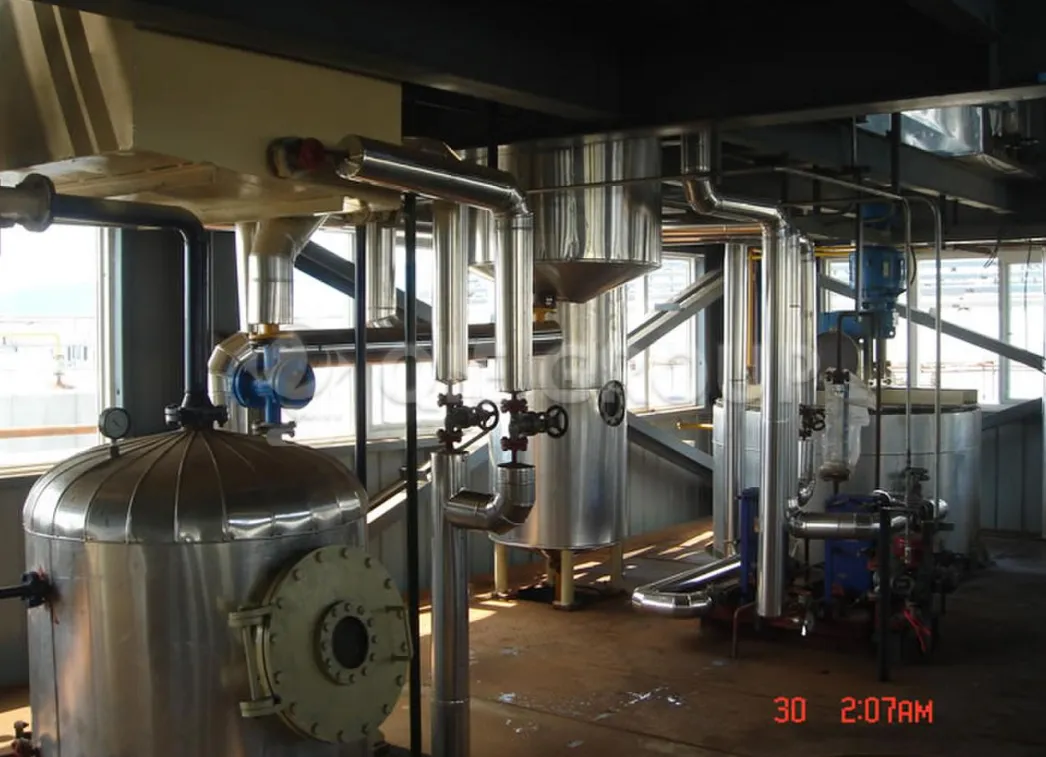
(1) Water washing and degumming section
Crude oil is pumped from the storage tank by a supply pump. After metering, it enters a heat exchanger to recover excess heat and is then heated to the process temperature by a heating device. Phosphoric acid or citric acid is added in appropriate proportions and fully contacted with the oil in a mixer. The oil then enters a conditioning tank to convert non-hydratable phospholipids into a hydratable form. After being heated to 90°C, it is fed into a centrifuge to efficiently remove phospholipids and impurities.

(2) Continuous decolorization process
This process is used to remove pigments, trace soap particles and metal ions. It uses a negative pressure environment combined with mechanical and steam dual stirring to improve adsorption efficiency.
The degummed oil is first heated to 110℃ and then enters the clay mixing tank. The clay is transported by wind and automatically added in a quantitative manner to achieve precise proportioning and oil inlet interlock control.
The mixed oil flows into a continuous decolorizer, where unpowered steam agitation promotes a uniform reaction. The decolorized oil is filtered through two alternating blade filters before passing through a safety filter into a vacuum storage tank to prevent oxidation that may affect quality.

Advantages of our company's continuous decolorization process:
(3) Continuous deodorization process
After being preheated in a spiral plate heat exchanger, the qualified decolorized oil enters a high-pressure steam heater to raise its temperature to 240–260°C before entering a combined deodorization tower. The upper packing layer removes odorous substances such as free fatty acids, while the lower plate tower further removes peroxides and achieves thermal decolorization.
After heat recovery through heat exchange, the deodorized oil is cooled to 80–85°C, antioxidants and flavorings are added, and finally cooled to below 50°C for storage. Volatile fatty acids are condensed and collected in a trap. When the liquid level is high, they are transferred to a fatty acid storage tank for future use.

(4) Automatic control system
Our company applies an automated control system that integrates safety, reliability, and advancements throughout the entire oil refining process. Operators can monitor equipment status in real time through a central control room terminal, enabling single-person control of the entire production line. This significantly improves management efficiency, reduces labor costs, and provides data support for optimized production decisions.